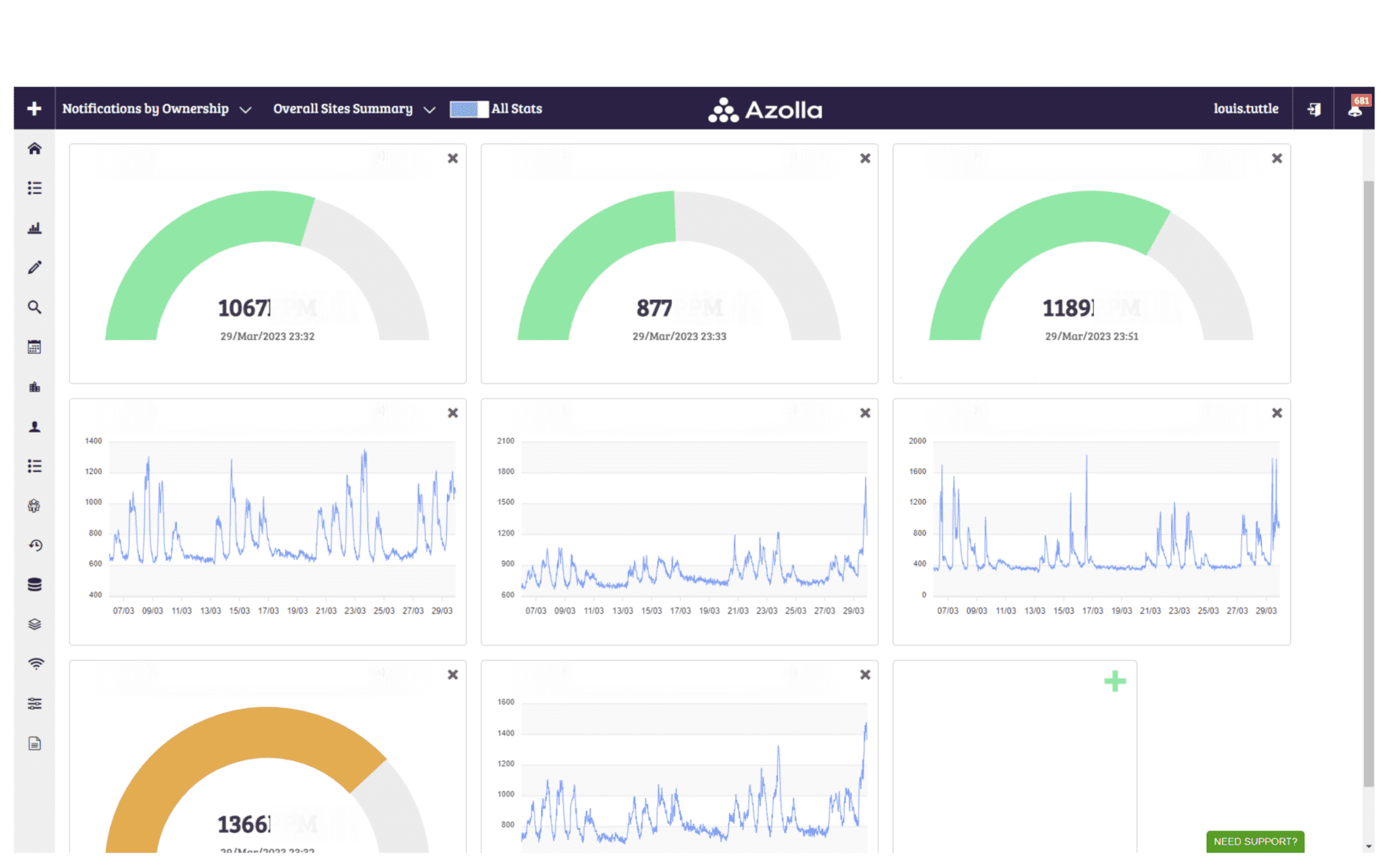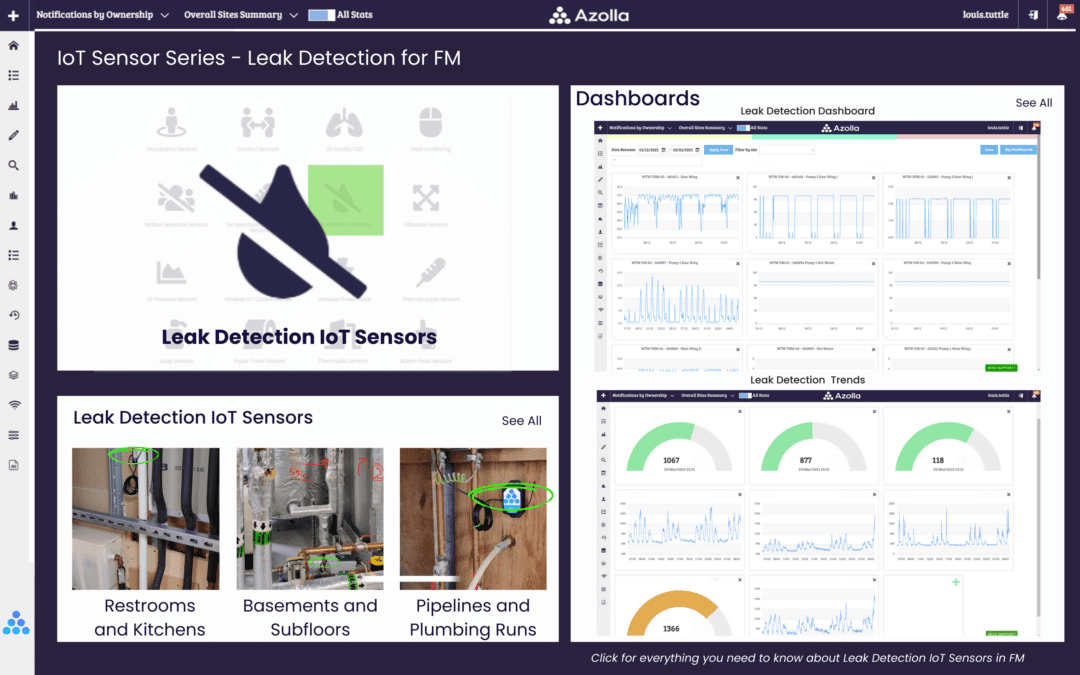The Growing Need for Leak Detection in Facility Management
In the world of facilities and building management, water leaks are more than just minor inconveniences—they can lead to significant damage, expensive repairs, and costly downtime if not addressed quickly. Whether managing commercial buildings, industrial sites, or multi-tenant properties, ensuring the early detection of leaks is crucial for avoiding catastrophic damage. This is where Leak Detection IoT Sensors come into play.
This blog post explores how Leak Detection IoT Sensors can protect your assets, reduce maintenance costs, and enhance overall building efficiency by offering real-time alerts and data-driven insights for proactive management.
Understanding Leak Detection IoT Sensors:
Leak Detection IoT Sensors are compact, wireless devices designed to detect water presence in critical areas within your facility. Once a leak is detected, the sensors immediately send alerts to your maintenance or facilities management team, allowing for swift intervention. This real-time monitoring and notification system ensures that small leaks are caught before they can cause extensive damage.
Strategic Locations for Leak Detection Sensors in Facility Management:
Here are key areas where leak detection sensors are commonly deployed:
- Basements and Subfloors: These areas are prone to flooding and water ingress, especially in older buildings or those in flood-prone regions.
- Mechanical Rooms and Boiler Rooms: With numerous pipes, pumps, and valves, these spaces are at high risk for leaks and require continuous monitoring.
- HVAC Systems and Chiller Plants: Cooling systems can develop condensation or refrigerant leaks that could lead to serious water damage.
- Data Centres and Server Rooms: Sensitive IT equipment is vulnerable to even the smallest leaks, which can lead to hardware failure and data loss.
- Restrooms and Kitchens: High-traffic areas with plumbing fixtures are often susceptible to unnoticed leaks and overflows.
- Under Sinks and Near Water Heaters: These common sources of water leaks need monitoring to prevent hidden damage over time.
- Elevator Pits: Water accumulation here can lead to mechanical failures and safety hazards.
- Roof Spaces and Gutters: Poorly maintained gutters and flat roofs can cause pooling water, which may leak into the building.
- Pipelines and Plumbing Runs: Sensors along extensive piping help catch leaks that might otherwise go unnoticed until significant damage occurs.
- Storage and Warehousing Areas: Protect valuable inventory or equipment from potential water damage, especially in high-risk zones.
Benefits of Leak Detection IoT Sensors:
1. Prevent Costly Water Damage: Undetected leaks can result in significant damage to your building’s structure, equipment, and materials. Whether it’s a slow, hidden leak behind a wall or a burst pipe, early detection can mean the difference between a minor repair and a major renovation. Leak detection sensors catch issues before they escalate, saving you thousands in repair and replacement costs.
2. Reduce Downtime and Operational Disruption: In commercial buildings and industrial facilities, water damage can lead to operational shutdowns, impacting productivity and revenue. Leak detection sensors allow you to address issues immediately, preventing extensive downtime and business interruptions.
3. Protect Valuable Equipment and Materials: Certain areas of your building, like server rooms, HVAC systems, and electrical panels, house sensitive equipment that can be severely compromised by water damage. IoT sensors placed in these high-risk zones provide continuous monitoring, ensuring critical systems remain operational and avoiding the costly replacement of equipment.
Examples include:
- Data Centres and IT Rooms: Even a small leak can have catastrophic consequences for your IT infrastructure, leading to hardware failure and data loss. Leak detection sensors placed under raised floors or near server racks provide instant alerts if water is detected, helping avoid system outages and data breaches.
- Mechanical Rooms and Boiler Rooms: Leaks in these areas can cause corrosion, damage to machinery, and even safety hazards if left unchecked. Sensors detect leaks early, allowing you to take action before significant damage occurs.
- Storage and Warehousing: Water can damage stored goods, raw materials, and equipment, leading to financial losses and supply chain disruptions. Leak detection sensors in key storage areas ensure any issues are caught immediately, minimising potential loss.
Enhance Sustainability and Water Efficiency:
Undetected leaks lead to significant water waste, which is both environmentally damaging and financially costly. Leak detection sensors allow facilities managers to quickly locate and fix leaks, reducing water consumption and helping to meet sustainability goals.
Support Compliance and Risk Management:
For many facilities, particularly in healthcare, food processing, and manufacturing, water damage can lead to compliance violations. Leak detection IoT sensors provide continuous monitoring and detailed records of any incidents, ensuring that you meet industry standards and reducing liability.
What Happens If You Don’t Use Leak Detection Sensors?
- Costly Repairs: Minor leaks can quickly turn into major issues, leading to expensive repairs and renovations.
- Increased Downtime: Water damage can cause operational shutdowns, disrupting business and reducing productivity.
- Damage to Critical Assets: Without early detection, leaks can destroy sensitive equipment and materials, leading to costly replacements.
- Non-Compliance Risks: In regulated industries, unchecked leaks can lead to violations, fines, and reputational damage.
- Wasted Resources: Unidentified leaks can cause excessive water waste, driving up utility costs and undermining sustainability efforts.
Ease of Setup and Integration:
Leak Detection IoT Sensors are easy to install and can be placed in critical areas prone to water leaks, such as around pipes, beneath appliances, and within mechanical rooms. They integrate seamlessly with existing Building Management Systems (BMS), Computer-Aided Facility Management (CAFM) platforms, and CMMS, allowing you to centralise monitoring and management. With real-time alerts sent directly to your dashboard or mobile device, facilities teams can act fast and minimise potential damage.
Future-Proof Your Facility with Leak Detection IoT Sensors:
Investing in Leak Detection IoT Sensors is not just about preventing water damage; it’s about safeguarding your building’s infrastructure, ensuring business continuity, and reducing operational costs. With these sensors in place, facilities managers can move from reactive maintenance to proactive management, addressing leaks before they escalate into major problems.
Want to know more?
Don’t wait for a disaster to strike—take control of your facility’s water management today. Explore our Sensor Series to learn more about how Leak Detection IoT Sensors can protect your assets, prevent downtime, and save on repair costs.
Get in touch below if you would like to find out more about IoT for your organisation or client sites.


